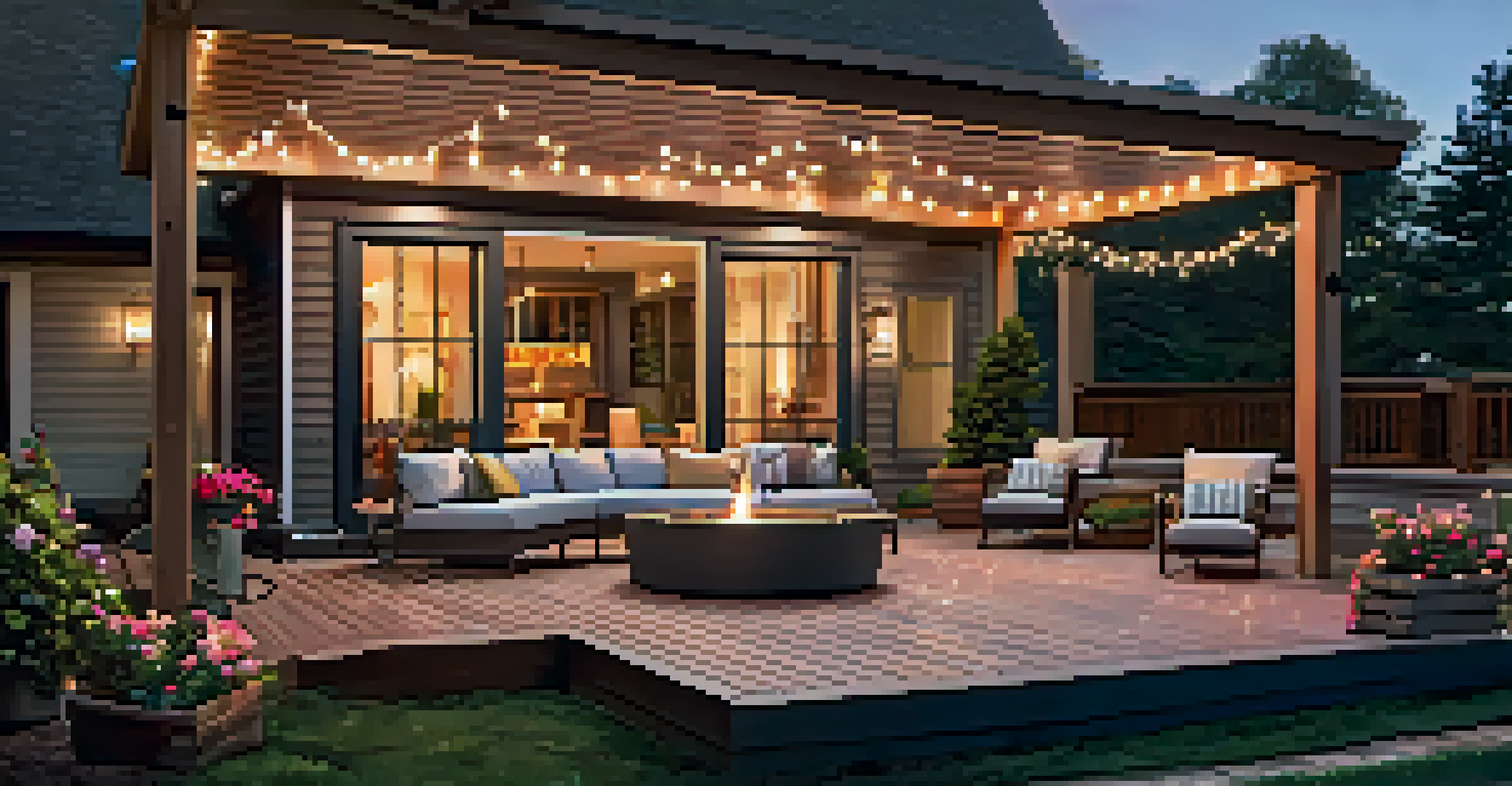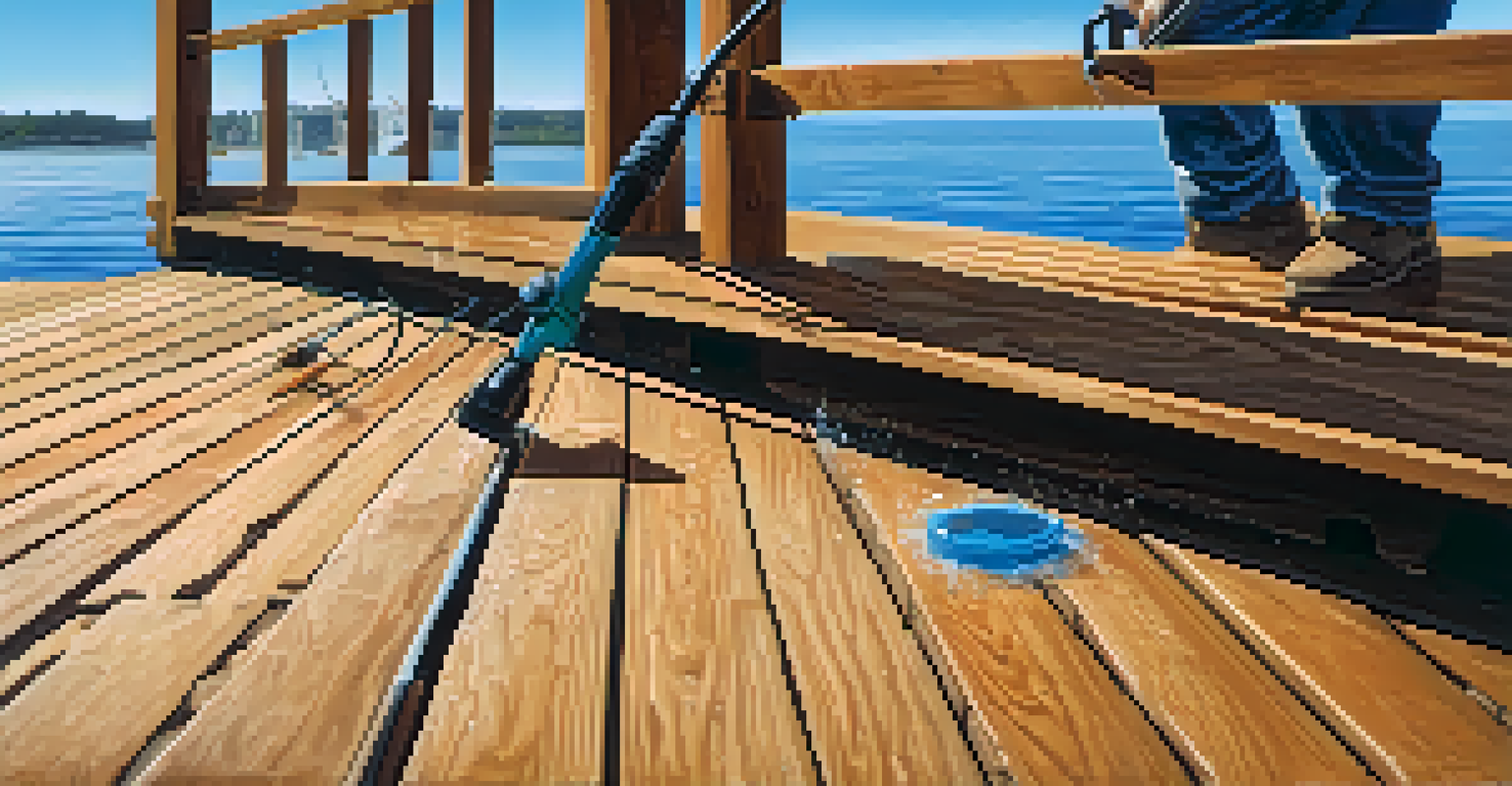Building a Deck: What Homeowners Need to Know

Understanding the Purpose of Your Deck Design
Before diving into deck construction, it's essential to clarify its purpose. Will it be a space for family gatherings, a quiet retreat, or an outdoor dining area? Having a clear vision will guide your design choices and materials.
The best way to predict the future is to create it.
Consider how you intend to use the deck throughout the year. For example, a space designed for summer barbecues might require features like built-in seating and shade options, while a winter-friendly deck could benefit from heaters or windbreaks.
Ultimately, understanding the purpose of your deck will help you create a functional and enjoyable space that enhances your home and lifestyle.
Choosing the Right Materials for Your Deck
Selecting the right materials is crucial for the durability and aesthetics of your deck. Common options include wood, composite, and PVC, each with its own pros and cons. For instance, while wood offers a classic look, it may require more maintenance over time.

Think about your local climate and how it will affect your material choice. If you live in a rainy area, for example, consider materials that resist rot and mildew, like composite decking, which can withstand moisture better than traditional wood.
Define Your Deck's Purpose
Clarifying the intended use of your deck will guide your design and material choices.
By weighing the characteristics of each material against your needs, you can make an informed choice that aligns with both your budget and your vision.
Understanding Local Building Codes and Permits
Before you start building, familiarize yourself with local building codes and regulations. Each municipality has specific rules regarding deck height, railing requirements, and more, which can significantly impact your project.
Good design is not just about how it looks, but also how it works.
Obtaining the necessary permits is often a crucial step in the process. Not only does this ensure compliance with local laws, but it also protects you from potential fines or having to dismantle your deck later on.
Taking the time to research these regulations upfront can save you headaches down the line and ensure your deck is a safe and legal addition to your home.
Planning Your Deck Layout and Design
Creating a thoughtful layout is key to maximizing your deck's potential. Start by sketching out different configurations to see how furniture and features will fit together. Consider flow and accessibility, ensuring there's enough space for movement.
Incorporating elements like built-in benches, planters, or even a fire pit can enhance both functionality and aesthetics. Think about how these features will impact your deck's overall vibe and usability.
Select Durable Materials
Choosing the right materials based on climate and maintenance needs is essential for longevity and aesthetics.
A well-planned layout can transform your deck into a welcoming oasis, perfect for entertaining or simply enjoying a quiet evening.
Budgeting for Your Deck Project
Establishing a realistic budget is crucial before you start building. Consider costs associated with materials, labor, permits, and any additional features you want to add. Having a comprehensive budget will help you avoid unexpected expenses down the line.
Don’t forget to factor in maintenance costs as well. Some materials may require regular upkeep, which can add to your overall investment over time. It's wise to think long-term when budgeting.
By outlining all potential costs upfront, you can create a financial plan that allows you to build the deck of your dreams without breaking the bank.
Hiring a Contractor vs. DIY: What’s Best for You?
Deciding whether to hire a contractor or tackle the project yourself can be challenging. If you have the skills and time, a DIY approach can save money and offer a satisfying project experience. However, it requires careful planning and execution.
On the other hand, hiring a contractor brings expertise and experience to the table, ensuring the job is done right the first time. This option may be more suitable if you're short on time or lack experience in construction.
Plan for Maintenance
Regular upkeep is crucial to extend the life of your deck and keep it looking great.
Ultimately, consider your skills, budget, and timeline when making this decision to ensure the best outcome for your deck project.
Maintaining Your Deck for Longevity
Once your deck is built, regular maintenance is essential to keep it looking great and functioning well. Depending on the materials, this could include cleaning, sealing, or staining, which can extend the life of your deck significantly.
Seasonal inspections are also a good idea. Look for signs of wear, such as loose boards or rusty nails, and address them promptly to prevent more significant issues down the line.

By investing time in maintenance, you can enjoy your outdoor space for years to come, ensuring it remains a beautiful and functional part of your home.